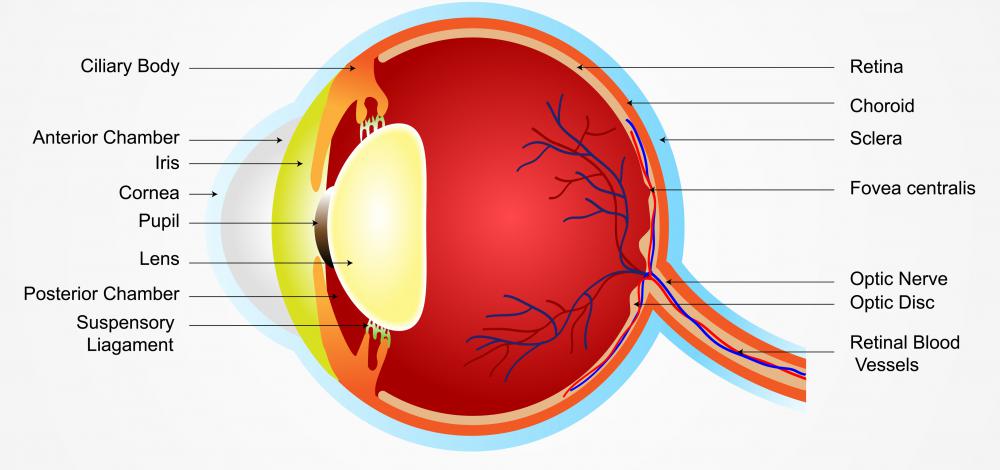At WiseGEEK, we're committed to delivering accurate, trustworthy information. Our expert-authored content is rigorously fact-checked and sourced from credible authorities. Discover how we uphold the highest standards in providing you with reliable knowledge.
What is an Ophthalmic Instrument?
Ophthalmology is a medical specialty dealing with eyes, including eye diseases and the anatomy of the eye. A specialist practicing this type of medicine is called an ophthalmologist, and such a specialist can perform eye exams to detect, diagnose and evaluate various types of eye disease, and can also correct these conditions through surgery. The term ophthalmic instrument often refers to a piece of diagnostic eye equipment used to examine the eye, such as the tonometer, which measures the pressure inside the eye, or the phoropter, which is used to determine the proper prescription for eyeglasses or contact lenses. Ophthalmic instrument can also refer to eye instruments used during surgery, such as an eye speculum and iris forceps. Common eye diseases that can be detected and evaluated using ophthalmic instruments include retinal detachment, which can lead to vision loss, and glaucoma, which involves damage to the optic nerve.
Usually an ophthalmic instrument used for diagnostic purposes is non-invasive. Some instruments shine a bright light into the eye, and sometimes eye drops or other medication is used to dilate the pupil or relax eye muscles when using a particular ophthalmic instrument. In many cases, ophthalmic instruments are part of the regular optometry equipment used during eye exams at an optometrist's office. A surgical ophthalmic instrument, such as forceps, clamps or specialized scissors, are usually only used under local or general anesthesia.

One commonly used ophthalmic instrument is the ophthalmoscope. It is used during a regular eye exam and allows the optometrist or ophthalmologist to see the retina at the very back of the eye. This is done to check for retinal detachment, as well as other damage to the retina. This ophthalmic instrument is also used to examine the vitreous humour, a gelatinous liquid inside the eyeball, to detect any changes that can cause vision problems. An ophthalmic instrument used for a similar purpose is the fundus camera, which takes photographs of the inside of the eye to monitor or detect eye disease.

Another common ophthalmic instrument is the ophthalmometer, which helps diagnose astigmatism. There is also the slit lamp which is used to examine various external parts of the eye, including the eyelids, iris, and white of the eye, and also internal parts such as the cornea and lens. Certain diseases and conditions, such as diabetes metellius, arterial hypertension, and extreme near-sightedness, increase the risk of serious eye disease and resulting vision loss. Regular ophthalmological exams are especially important in these cases to avoid vision loss and blindness.
AS FEATURED ON:
AS FEATURED ON:
















Discuss this Article
Post your comments